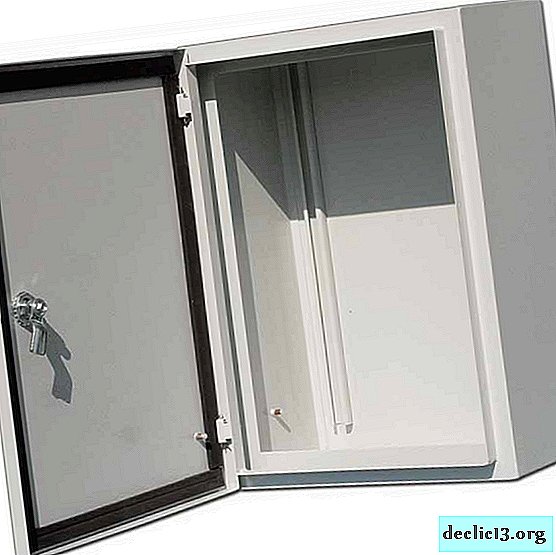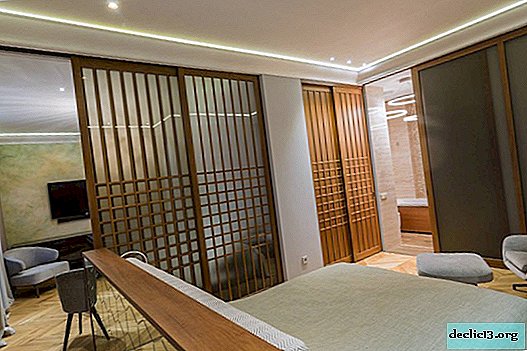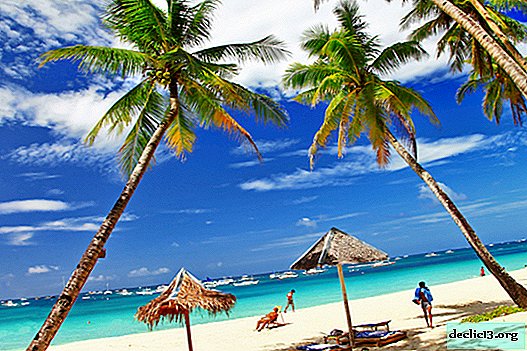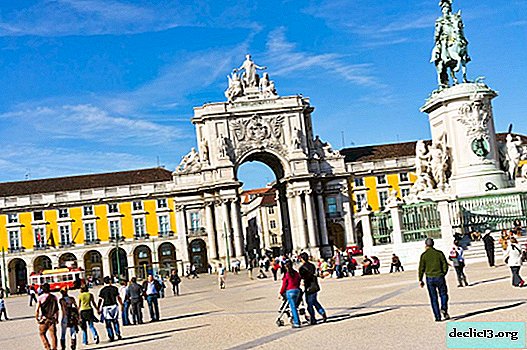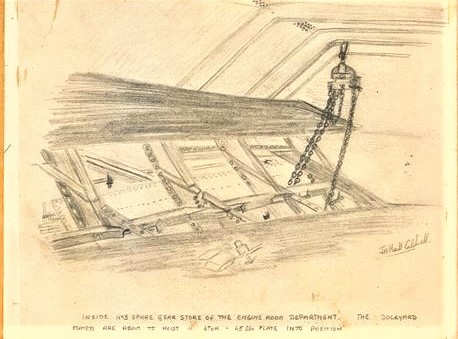Pamukkale, Turkey: 4 main attractions of the complex
Pamukkale (Turkey) - a unique natural site, located in the southwestern part of the country 16 km from the city of Denizli. The exclusivity of the area lies in its geothermal springs formed among travertine deposits. Translated from the Turkish language, Pamukkale means "Cotton Castle", and such a name perfectly reflects the appearance of the attraction. The object, analogues which cannot be found all over the world, is under the protection of the UNESCO organization and annually attracts hundreds of thousands of tourists vacationing in the resorts of Turkey.

To appreciate the beauty of the attraction, just look at the photo of Pamukkale. The object already existed in ancient times: it is known that in the 2nd century BC King of Pergamum Eumenes II built the city of Hierapolis near the area. But how did the natural complex itself form?
For millennia, thermal waters with a temperature of 30 to 100 ° C washed the surface of the plateau. Over time, miniature mineral pools began to form here, bordered by travertine and descending a bizarre cascade along the slope. Due to the high concentration of calcium bicarbonate in water over the centuries, the mountain surface was covered with snow-white deposits.

Today, in the territory where Pamukkale is located, there are 17 full-fledged mineral springs rich in useful chemical elements. Huge flows of foreigners wishing to see a unique attraction and swim in its thermal pools, gave impetus to the development of tourist infrastructure. Hotels and restaurants, shops and souvenir shops appeared in Pamukkale, which allowed tourists to stay here for a long time. One day to relax in the Cotton Castle is clearly not enough: after all, in addition to the natural complex itself, there are several interesting historical monuments near the object, which would be a big omission to get to know.
Attractions in the area
Photo of Pamukkale in Turkey managed to fascinate millions of travelers and every year they continue to attract more and more curious travelers to the sights. The intricate natural complex in combination with ancient buildings becomes a real tourist treasure. What historical monuments can be seen near the thermal resort?
AmphitheaterAmong the attractions of Pamukkale in Turkey, the ancient amphitheater is one of the largest in the country. Over the centuries, the construction has been seriously damaged, mostly due to powerful earthquakes. The theater was restored several times, but the building was again and again exposed to natural elements. In the 11th century, the building experienced its final decline and began to be used for domestic purposes. The last reconstruction of the amphitheater took more than 50 years and ended only in 2013.

Hierapolis, located near the thermal springs, was very popular among the Romans, who could not imagine their leisure without spectacular views. The amphitheater, which accommodated up to 15 thousand spectators, for a long time served as a platform for gladiatorial battles. To this day, the construction has come in good condition, which was facilitated by long restoration work. Even today, inside the building you can observe excellent acoustics. There are also preserved spectator seats opposite the stage, intended for high-ranking visitors.
The sights of Pamukkale are also represented by the ruins of the ancient temples of Hierapolis. At the beginning of the 3rd century, a temple dedicated to the ancient Greek god of light and arts Apollo was erected on the territory of the ancient city. The shrine became the largest religious building in Hierapolis, but over the centuries, like the amphitheater, it was destroyed by numerous earthquakes.

In the 4th century, another temple appeared in the city, built in honor of the Apostle Philip. About 2 millennia ago, the Romans executed the saint in Hierapolis, and until recently, no researcher could find his grave. In 2016, Italian archaeologists, who have been excavating the monastery for more than 30 years, still managed to find the chapel-tomb of the apostle, which made a real sensation in research circles and made the temple of Philip a truly sacred place.

Of interest is the temple of Pluto, whose ruins are in the ancient city. In the myths of ancient Greece, a description of the kingdom of the dead with a mysterious entrance, located somewhere underground, is repeatedly found. In 2013, Italian researchers found the so-called gate of Pluto in Pamukkale. Among the ruins under the stands of the temple, they managed to find a deep well, at the bottom of which they found carcasses of dead birds and a statue of Cerberus (symbol of Pluto). The high concentration of carbon dioxide in the walls of the well, capable of killing an animal in a matter of minutes, left no doubt among ancient inhabitants that it was in Hierapolis that the gates to the other world were located.
Martyr St. PhilipThe building was erected at the beginning of the 5th century in memory of all the martyrs who sacrificed their lives for the sake of faith. The shrine was built in the very place where in 87 the Romans crucified St. Philip. The monastery is of great importance in the Christian world, and every year pilgrims from different countries come to its ruins to honor the memory of the apostle. The ruins of Martiria are located on a hill, you can go to them along the ancient steps. The structure itself was seriously damaged during the earthquakes, and only fragments of walls and columns have survived to this day. On individual stones found Christian symbolism.
 Cleopatra's Pool
Cleopatra's PoolCleopatra's pool has long been an integral attraction of Pamukkale. Built over a thermal spring where healing water comes from, the pond was half destroyed during an earthquake in the 7th century. The parts of the columns and walls that fell into the water did not begin to be removed: they are clearly visible in the photo of the Cleopatra basin in Pamukkale in Turkey. There is a legend that Cleopatra herself liked to visit the source, however, reliable facts confirming the visits of the Egyptian queen were not found.

Throughout the year, the temperature of seethed thermal waters is held at 37 ° C. The deepest point of the pool reaches 3 m. A visit to the source has a healing effect on the whole body and promises to heal skin, neurological, joint diseases, as well as ailments associated with the work of the heart, gastrointestinal tract, etc. In general, mineral waters can rejuvenate and tone up the whole the body. However, to achieve the desired effect, the Cleopatra pool in Pamukkale in Turkey must be visited several times in a row.
Pamukkale in winter: is it worth it to come

Many tourists are interested in whether to go to Pamukkale in winter. This question definitely cannot be answered, since such a trip has both advantages and disadvantages. The main disadvantage is the weather: in the winter months, the average air temperature in the afternoon in Pamukkale ranges from 10 - 15 ° C. But at the same time, the temperature of the thermal springs remains the same as in the summer (about 37 ° C). The water itself is warm and comfortable, but upon leaving it you can freeze very quickly. If such a temperature difference is not a problem, then you can safely go to the thermal resort in the low season, because otherwise the trip will leave only positive impressions.

Is it possible to swim in Pamukkale in the winter, we have already found out. Now it remains to understand what to do after the thermal procedures. As we indicated above, in the vicinity of this natural complex of Turkey there are a lot of interesting sights, which are especially convenient to visit in the winter. Firstly, during this period, tourists in Pamukkale are much less. Secondly, the absence of the scorching rays of the sun and heat will allow you to slowly and comfortably explore all the ancient monuments. In addition, local hotels make good discounts in winter, so you can save money.
Where to stay
 Koray hotel
Koray hotelIn the area where Pamukkale is located in Turkey, offers a fairly rich selection of hotels, both budget and luxury. If the main purpose of your trip is to visit the natural site and its surrounding attractions, it is most reasonable to stay in a small village located right at the foot of the snow-white slopes. The cost of living in local establishments starts from 60 TL per day in a double room. In the upper class options, with a pool and free breakfast included in the price, renting a double room will cost an average of 150 TL.
 Sahin
SahinIf you are counting on a comfortable stay at the Pamukkale Hotel with its own thermal pools, then it is best for you to look for accommodation in the area of the resort village of Karakhayit, located 7 km north of the Cotton Castle. The price for double in such hotels is 350-450 TL per night. The price includes access to the thermal pools on site and free breakfast (some hotels include dinners). You can get from Karakhai to Pamukkale and ancient attractions by taxi or public transport.Find out RATES or book any accommodation using this form
How to get there

To understand how to get to Pamukkale, it is important to identify the starting point. Most tourists come to places of interest as part of an excursion from the resorts of the Mediterranean and Aegean Seas. The distance from Pamukkale to the most popular tourist cities is about the same:
- Antalya - 240 km,
- Kemer - 275 km,
- Marmaris - 210 km.
You can reach the object in about 3-3.5 hours.
If you plan an independent trip to the sources, you can use the Pamukkale intercity bus. There are daily flights from almost all cities in southwestern Turkey. Detailed schedule and ticket prices can be found on the official website of the company www.pamukkale.com.tr.

In the case when you intend to go to Pamukkale from Istanbul (distance 570 km), the easiest way to use the airways. The nearest airport to the natural site is in the city of Denizli. Every day, in a given direction, several flights of Turkish Airlines and Pegasus Airlines depart from Istanbul's air harbor.
- Travel time is from 1 hour to 1 hour 20 minutes.
- Ticket prices range from 100-170 TL.
Excursions
Pamukkale is considered one of the most popular excursion routes, so buying a tour to a natural site will not be difficult. Vouchers can be purchased either from guides in hotels or in street travel agencies outside the territory of hotels. As a rule, a tour in Pamukkale in Turkey is of two types - one-day and two-day. The first option is suitable for tourists who have arrived on vacation for a short time and want to get to know the attraction in haste. The second type of tour will appeal to those travelers who want to go everywhere and for a long time.

If you are interested in which resort is closest to Pamukkale in Turkey, then we explain that this is Marmaris. Although Antalya is not much further from the facility. Most of the time will take the road for tourists traveling on an excursion from Kemer and Alanya.

The price of a trip to Pamukkale at different resorts varies in approximately the same range. First of all, the cost depends on the duration of the tour and the seller itself. All tourists should know that guided tours are always more expensive than at local Turkish agencies.
- On average, a one-day trip will cost 250 - 400 TL, a two-day trip - 400 - 600 TL.
- Entrance to the Cleopatra pool is always paid separately (50 TL).
Regardless of which tourist city you are traveling to in Pamukkale, departure for an excursion will occur early in the morning (around 05:00). As a rule, a one-day tour includes a trip on a comfortable bus, a Russian-speaking guide, breakfast and lunch / dinner. The cost of a two-day tour also includes an overnight stay at a local hotel.

A tour of Pamukkale in Turkey begins with a tour of the ancient ruins of Hierapolis. Then the tourists go to the Cotton Castle itself, where after taking off their shoes, they walk along the shallow thermal springs and take photographs. And after the guide takes everyone to the Cleopatra pool. If the tour is one-day, then the event is quite dynamic, if the trip is two-day, then no one rushes anyone. Absolutely all excursions are accompanied by multiple visits to shops and factories both on the way to the sights and on the way back.

Useful Tips
- Going to Pamukkale in Turkey, be sure to bring sunglasses with you. The white calcium deposits in the Cotton Castle in sunny weather sharply reflect light, which irritates the mucous membranes of the eye.
- If you plan to swim in the Cleopatra pool, then you should take care of the necessary bathing accessories in advance (towel, swimsuit, slates). The complex, of course, has shops, but the prices are sky-high.
- We have already figured out where is closest to Pamukkale in Turkey. But no matter where you go, in any case, a fairly long road awaits you, so be sure to stock up on bottled water.
- If you decide to go to Pamukkale as part of an excursion, then be prepared for frequent stops at local factories and shops. We strongly do not recommend purchasing goods in such places, since the price tags in them are several times overpriced. Repeated cases of deception of tourists at a winery are known, when they give a taste of delicious tasty wine at a tasting, and in bottles they sell a completely different drink in content, which is presented as the original.
- Do not be afraid to buy a tour in Pamukkale (Turkey) at street agencies. Claims that your insurance will not be valid on such trips are myths and legends of guides who strive not to miss potential customers by all means.


